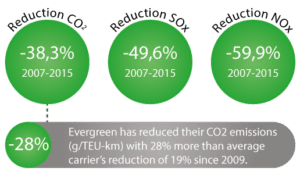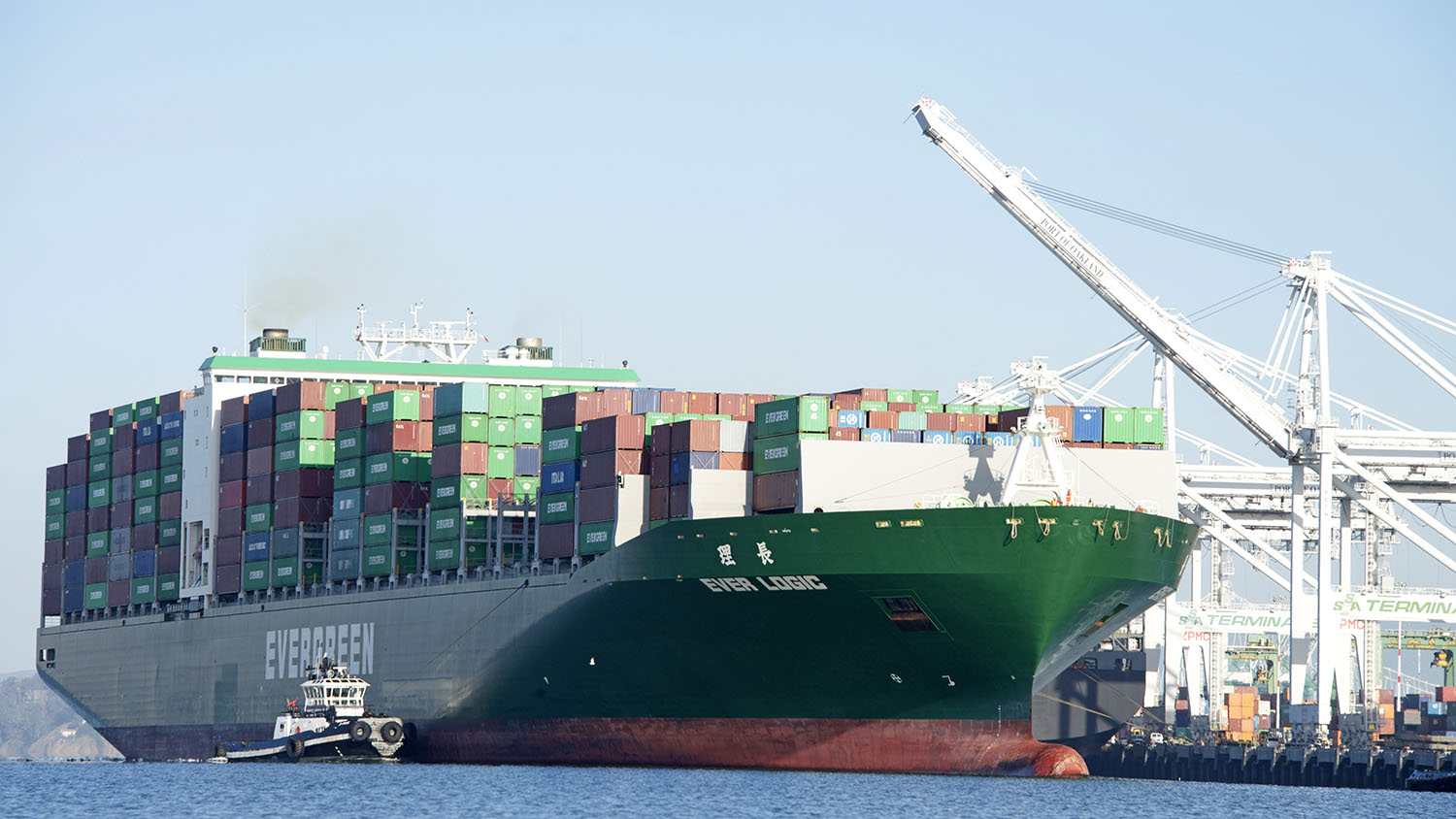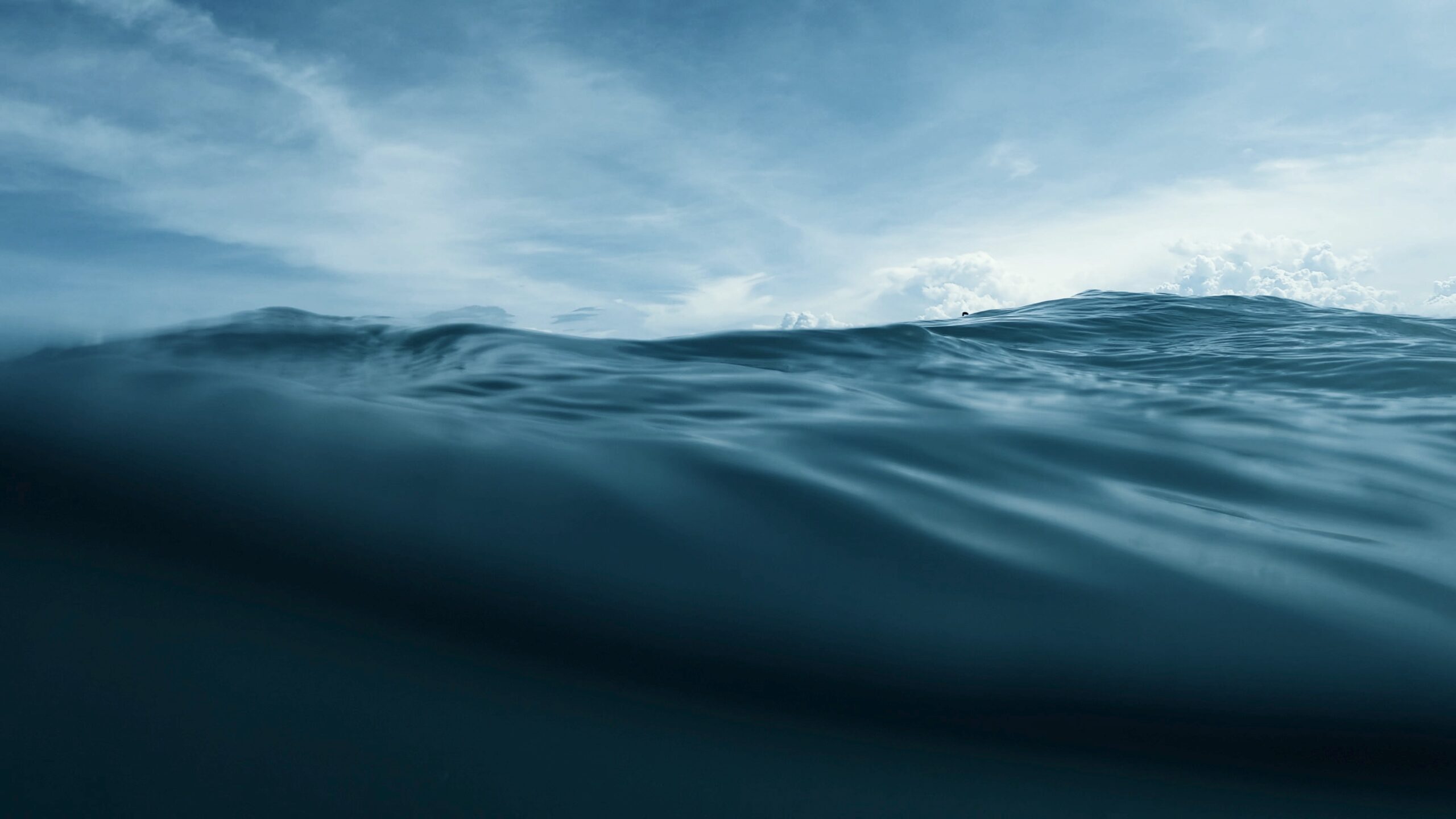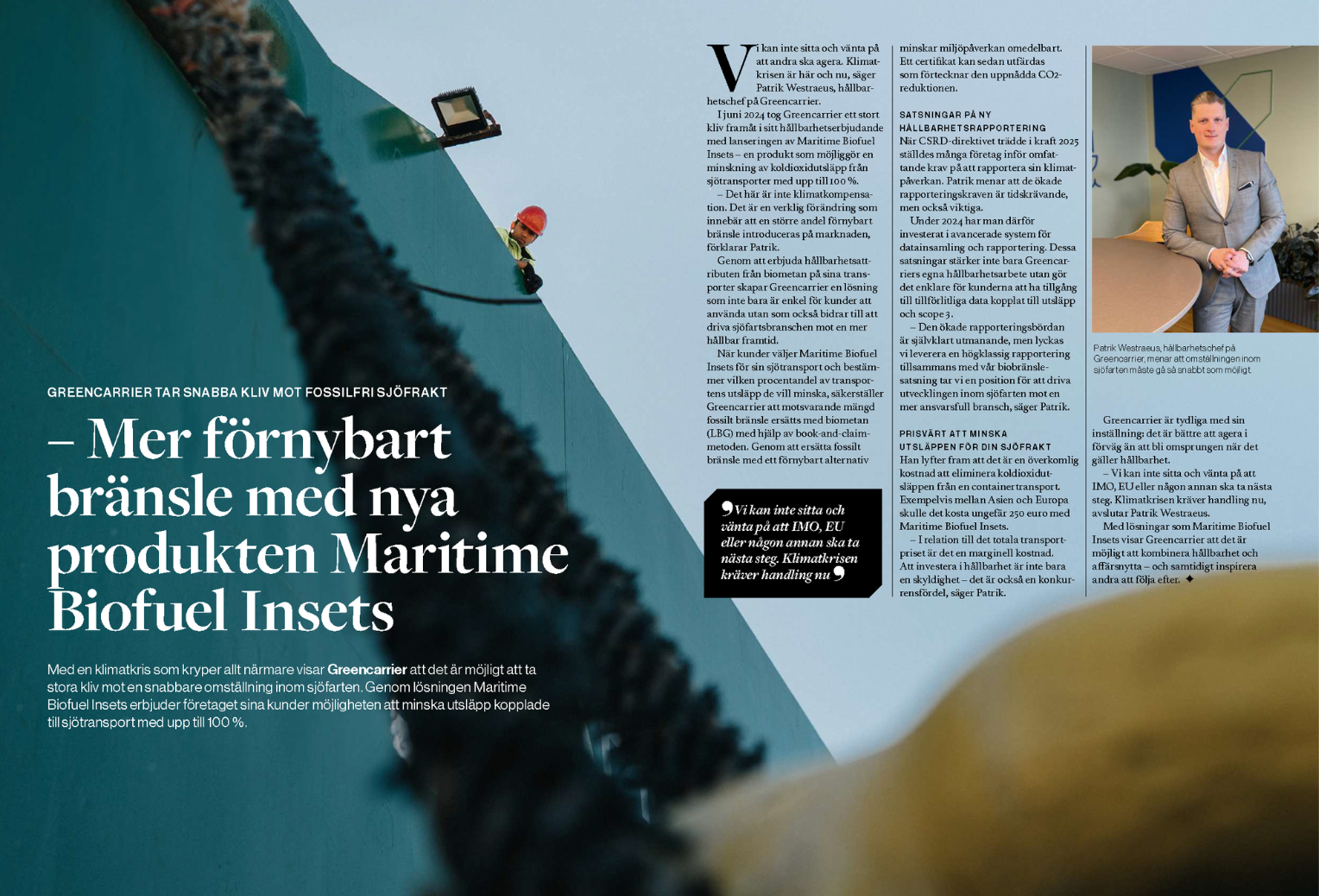In my previous blog posts, I have described why the environment is always on Evergreen’s agenda and also discussed the possibility to optimise vessel navigation in eco-friendly ways. In this article, I will share some of the environmental actions that Evergreen has taken to further minimise the emissions of their vessels.
Reduction of NOx, SOx and CO2 emissions of the vessels over the years
Since 2007, Evergreen has managed to reduce nitrogen oxide emissions by almost 60%, sulphur oxide emissions by almost 50% and carbon dioxide emissions by almost 40% by reducing the vessels’ speed, output and other actions. The emissions were monitored and calculated (g/TEU*km) according to the related data from the ships’ consumption quantity reports.

The nitrogen oxide emissions are based on engine emission values, output and running hours of the main engines and generator engines. The sulphur oxides emissions are based on fuel consumption – including all fuel types and all onboard consumption such as diesel and heavy fuel for main propulsion engine, auxiliary engine and other functions – and the corresponding sulphur content of each fuel type. The carbon dioxide emissions are based on the fuel consumption.
Vessel design matters – high energy efficiency with the right equipment and engines
Evergreen has put the Energy Efficiency Design Index into practice since their L-type shipbuilding project. All of the 30 L-type ships are certified according to the index. The index is a technical measurement for new ships that aims at promoting the use of more energy efficient and less polluting equipment and engines. EEDI also requests that the CO2 emissions of newly designed container vessels with deadweight no less than 15.000 tons should be reduced by at least ten percent. Accordingly, Evergreen’s new B-type vessels are equipped with electronic-controlled fuel injection engines to comply with EEDI. Evergreen’s new coming G-type, 18.000 teu vessel will produce 7 % less CO2 than current engines. The new G-type vessels will be in service starting from year 2018.
Sticking to the plan for improving energy efficiency of ship operations in the long run
Evergreen also uses a Ship Energy Efficiency Management Plan. The purpose of the plan is to establish procedures to improve the energy efficiency of ship operations. They are committed to protecting the environment by tracking and analysing the energy consumption on their vessels. It is their policy that its vessels are always operating in the most efficient way possible and are consistent with safe and reliable service. The management plan lays the foundation to put processes in place to optimise operational processes. It is a resource guide for all personnel to increase energy efficiency in vessel systems and operational processes.
By using Evergreen’s services, shippers cut pollution and emissions in the transportation of their goods and reduce the carbon footprint in their supply chain. It is reflected in their corporate social responsibility, which helps enhance their ability to increase sales, customer value and create a win-win situation.
Educating staff and onboard crews in environmental issues and matters
Training and education are key to implement environmental thinking in the processes. All new employees at Evergreen are therefore required to take a training course in marine environment awareness. It includes learning about the environmental policy, global requirements and compliance such as SECA and EU port rules, VGP, oil transfer procedures, pollution prevention and safe bunkering, garbage handling and disposal, biofouling management, instructions to BMP, the Ship Energy Efficiency Management Plan and maintenance and operation record methods including ballast water treatment systems.
Before the crew gets onboard, it is required to join a pre-boarding training. Every month, an environmental training is arranged onboard, where all instructions are went through and the crew gets to carry out the procedures onboard.





